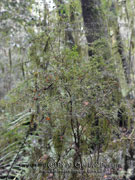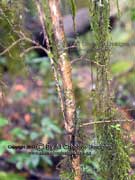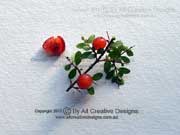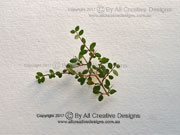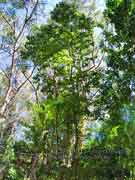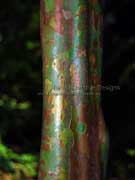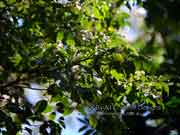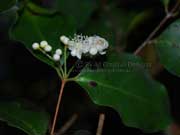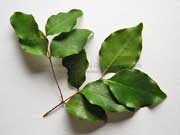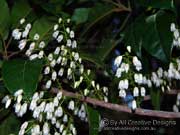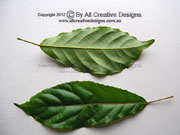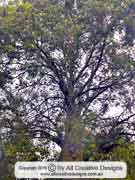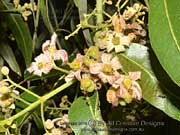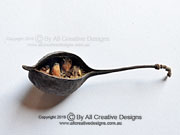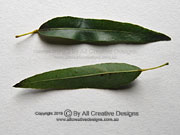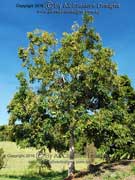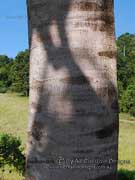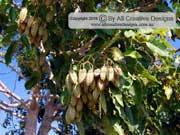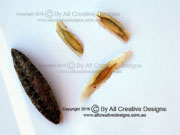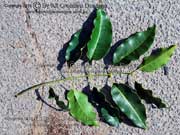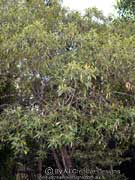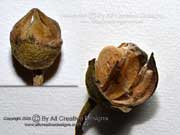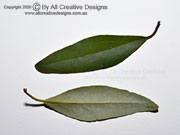
< Expand the Menu to access our Tree Identification Pages
Australian Tree Identification by Vegetative Characteristics
Vegetative features in identification of native trees or shrubs can be divided into a number of categories. They include; leaf, flower, fruit, bark characteristics and the size, shape and form, collectively called the habit of the plant. Comprehensive information on leaf features, bark texture and distribution range are given for each native tree species. The content of the web page below is constantly extended, revised and updated. Refresh the page in your browser to view updated content.. The Rainforest of Australia's East Coast book shows tree identification images in printed format.
Species in the following genera are listed in groups on our web pages: Australian Fig trees (Ficus spp.), Australian Eucalypts (Eucalyptus spp.), Grevilleas (Grevillea spp.) and Lilly Pilly, Satinashes (Syzygium ssp.). Otherwise all native Australian tree species are listed in alphabetical order. To locate trees by botanical name or to find related species go to: Species List Botanical, which also shows all family names.
Narrow-leaved Geebung Persoonia virgata
Narrow-leaved Geebung Persoonia virgata Other names: Small-leaved Geebung, Wallum Geebung
This multi-branching shrub rarely exceeds a height of more than 4m. Its preferred habitat includes open dry forests and heath lands in the proximity to the coastline. Geebungs belong to the large and distinctive genus of Persoonia, which has a wide distribution range covering every state of Australia. Persoonia species occur in diverse environments ranging from rainforests to arid regions (Image 1). Fresh bark of P. virgata is a reddish brown colour and becomes rough and fissured on older stems (2). The fleshy fruit, a drupe, is very characteristic for the genus and features the persisting hardened flower style at the apex, which is also typical for members of the Protea family (PROTEACEAE). The mature fruit of this species turns a yellowish green and is circa 1.5cm long at full maturity. The skin covers a translucent fruit flesh that becomes very sticky when exposed (3 & 4). Simple leaves with an alternate arrangement (when mature) are; up to 5cm long, narrow linear in shape, hairless (mature), dark green, semi-glossy on top, paler green beneath, strong and somewhat rigid in texture. Leaf apex terminates in a fine tip. Distribution: Central-coast of NSW to Qld. See the Botanical Species List to locate other Persoonia species (Geebungs) on this website.
Narrow-leaved Honey Myrtle Melaleuca trichostachya
Narrow-leaved Honey Myrtle Melaleuca trichostachya Other names: Narrow-leaf Honey-myrtle
This widespread and very adaptable shrub or small tree is found from dry inland regions to the high rainfall areas of tropical north-eastern Queensland. It reaches a height of up to 10m and features a typical paperbark and small but distinctive leaves (Image 1). Bark is grey and sheds in flaky papery patches (2). The flower spikes are 4 to 5cm long and normally appear at the end (terminal) of young branches. The rachis is brown and finely hairy. Individual sweet honey scented flowers feature conspicuous white bundles of stamens and small elliptical white petals up to 3mm long. The calyx is green, cup-shaped with 5 pointed lobes (sepals) (3). The small woody fruit is a 3-valved capsule, which is inversed cone-shaped (botanical: turbinate) and reaches a diameter of up to 4mm. Each valve contains a number of tiny cream-coloured seeds (4). Simple leaves with a mostly opposite arrangement are; up to 3cm long, usually linear in shape with entire margins, hairless, the same colour on both surfaces (concolorous), rather rigid and scented when crushed. Leaf apex is acute ending in a fine tip. Venation except for centre vein is non-visible (5). Distribution: Qld, NT, SA and inland areas of NSW. Note: This species is a beautiful and hardy ornamental plant that attracts nectar feeding birds.
Narrow-leaved Orange Thorn Pittosporum lancifolium
Narrow-leaved Orange Thorn Pittosporum lancifolium
Under ideal conditions this species might be a medium sized tree up to 20m tall, but as an understorey species within subtropical rainforests, it is more likely to be a tall shrub (Image 1). Bark is cream coloured and prominently marked by darker blisters (pustules) (2). Highly fragrant flowers are typical for the genus and feature 5 white petals, which change to a pale yellow with age. They are fused at the base and terminate in oblong shaped lobes. Flowers are shortly stalked and emerge solitary or in pairs from leaf axils (3). Young lateral shoots terminate in sharp tips and short spines are present (4). Simple leaves with an alternate arrangement are; up to 5cm long, lanceolate (lance-shaped) or elliptic with entire margins, hairless, dark green, semi-glossy on top, pale green beneath, relatively thin but firm in texture. Petiole (leaf stalk) is 2 to 3mm long (5). Distribution: Northern NSW to southern Qld.
See Flower Characteristics Page and Leaf Characteristics Page for information on terms used.
Rainforests of Australia's East Coast, HAND SIGNED BOOKS; (Out of Stock) A practical and informative field guide to the identification of native rainforest species. More than 800 colour photographs, informative graphics, maps and detailed description of more than 300 species.
This book is a valuable information source for bushwalkers, students, gardeners and anyone with an interest in Australia’s native flora.
The book was written and illustrated by the author of the tree identification web pages.
New Holland Publishers: May 2019
ISBN: 9781925546293
Format: Paperback with PVC
Pages: 304 pp.
Size: 23 cm high x 15 cm wide
Full Colour Photography
Rainforests: Identification - Evolution - Reproduction
Dedicated photography of rainforest species including; mosses, mushrooms, lichens, slime moulds, ferns, conifers, flowering trees, climbing plants, orchids and palms enable the reader to identify commonly encountered species.
CLICK HERE FOR MORE INFORMATION
Narrow-leaved Orangebark Maytenus silvestris
Narrow-leaved Orangebark Maytenus silvestris
This native shrub or small tree is found in wet tall forests adjacent to rainforests and in dryer open forests dominated by Eucalyptus species (Picture 1). Freshly exposed bark is an orange-brown changing to a grey brown colour with age and has a firm texture (2). Small greenish white flowers with five broadly rounded petals measure around 4 to 5mm in diameter. They are borne on individual flower stalks or on small racemes (3). The fruit (a capsule) is ovoid, up to 7mm long and turns an orange colour when ripe (fruit shown is still immature). The remaining flower calyx at the base and the persistent style at the top of the fruit are good identification characteristics (4). Simple leaves with an alternate arrangement are; up to 8cm long, narrow at less than 15 mm wide, mostly lanceolate (lance-shaped) with entire margins towards the base but often with a few sharp teeth towards the apex, dark green on top, hairless, rather thick and stiff in texture. Leaf apex shape is acute, base shape is cuneate. Venation is fine but visible and the short petiole is only 2-3mm long. Distribution: from NSW south coast to Qld.
Note: This species intergrades with the Orange Bark Maytenus bilocularis (same page), where both species share a habitat.
See Flower Characteristics Page and Leaf Characteristics Page for information on terms used.
Narrow-leaved Wattle Acacia linearifolia
Narrow-leaved Wattle Acaia linearifolia
This tall shrub or small tree reaches a height of up to 10m and becomes very noticeable due to its beautiful bright yellow flower display over winter and early spring (Picture 1). Bark on branches and trunk is relatively smooth, but can be rough at the base of older trees, it is greyish brown and has a firm texture (2). Up to 20 globose (rounded) flower heads, measuring less than 10mm in diameter, are arranged along an axis up to 8cm long (racemose) (3). Narrow phyllodes with an alternate arrangement are; up to 14cm long, up to 4mm wide, mostly straight or sometimes slightly curved, hairless, strong and stiff in texture. The phyllode apex shape is acute showing a fine, offset tip (mucro), and towards the base a definitive swelling (gland) is visible. The centre vein is obvious, but no laterals are visible (4 & 5). Distribution: NSW central tablelands and western slopes, but grown elsewhere as an ornamental and naturalising outside its original habitat. Note: Very similar to the Cascade Wattle A.adunca
Native Cascarilla Croton verreauxii
Native Cascarilla Croton verreauxii Other names: Green Native Cascarilla
This attractive shrub or small tree is a common occurrence along the margins of different rainforest types and in wet open forests. When receiving ample sunlight it can attain a height of 10m or more, but as an understorey species it is more likely to be multi-stemmed shrub less than 5m high (Picture 1). Bark on older trunks is mid to dark brown and becomes fissured and somewhat scaly (2). Small flowers are held along short racemes up to 6cm long, which appear at the very end of young branches over the summer months. Fowers are yellowish green in colour with 5 pointed sepals and prominent stamens being the main features (3). The rounded fruit, a capsule with 3 separate valves (segments), reaches up to 6mm across and changes from green to a yellow brown when fully mature. It is covered in short, very fine hair and contains a single, cream coloured seed in each valve (4). Simple leaves with an alternate arrangement are: up to 13cm long, lanceolate or elliptic in shape with finely toothed margins, hairless, dark green, very glossy on top, lighter green, also glossy beneath, soft and smooth in texture. Leaf apex is mostly acute ending in a rounded tip, base shape varies from cuneate to more rounded. The slender petiole (leaf stalk) can grow to 5cm in length and features 2 clearly visible glands on small stalks at the joint with the leaf blade. Venation is more visible on lower leaf surface (5). Distribution: from NSW south coast to southern Qld. See Flower Characteristics Page and Leaf Characteristics Page for information on terms used.
Native Crepe Myrtle Lagerstroemia archeriana
Native Crepe Myrtle Lagerstroemia archeriana Other names: Queensland Crepe Myrtle
This handsome shrub or small tree is native to Australia’s tropical north and closely related to the exotic Crepe Myrtle Lagerstroemia indica, which’s cultivars are widely used in landscaping. It not only occurs in rainforests but also in drier locations and is deciduous from late winter into spring (1). On older trunks the outer bark weathers to grey and sheds in thin papery layers to reveal a new pinkish brown layer (2). Gorgeous flowers can be mauve, dark pink or purple in colour and measure about 4cm in diameter. They feature a prominent calyx with 5 pointed sepals that can be bright red in colour. The five stalked petals have a crinkled surface and reach up to 16mm in length (3). The fruit (a capsule) is hard in texture and black in colour at full maturity. It is seated in the remaining calyx and splits lengthwise to disperse brown coloured and winged seeds from multiple valves (segments) (4). Simple leaves with an opposite arrangement (sometimes slightly offset) are; up to 16cm long, ovate or broadly lanceolate (lance-shaped) with entire margins, dark green, hairless on top, yellowish brown hairy beneath and strong in texture. Leaf apex gradually tapers into a fine tip, base is rounded (obtuse) or broadly wedge-shaped (cuneate). The stout petiole (leaf stalk) is less than 1cm long. Distribution: Tropical Qld, WA, and NT.
Native Frangipani Hymenosporum flavum
Native Frangipani Hymenosporum flavum
The Native Frangipani is medium sized tree species reaching a height of up to 20m within subtropical, warm temperate rainforests and adjacent sclerophyll forests (Picture 1). Bark on mature specimens is brown in colour with the weathered top layer turning grey; texture is hard and furrowed (2). Superb flowers are white in colour when opening changing to a bright yellow with maturity and are arranged on small panicles. Scented flowers reach up to 5cm in diameter and bloom over spring (3). The fruit is a flattened brown capsule, which is hairy on the outside and up to 4cm long. It splits and releases numerous winged seeds from 2 valves (segments) (4). Simple leaves emerge in a whorl of up to 4 leaves below the growing bud and turn alternate when maturing. They are; up to 15cm long, obovate to oblanceolate (reverse lance-shaped) with entire margins, dark green and glossy on top, paler green below, soft, thin, smooth and hairless. Leaves on juvenile trees and new growth on mature specimens are hairy. Leaf apex is short acuminate, base shape is attenuate. Mid vein and laterals are slightly impressed on the upper and raised on the lower leaf surface. Distribution: NSW south coast to north Qld. The species is often planted as an ornamental tree for its attractive flowers.
Native Gardenia Atractocarpus benthamianus
Native Gardenia Atractocarpus benthamianus
On fertile soils this handsome tall shrub or small tree grows to a height of up to 12m. It is found as an understorey species within warm temperate and subtropical rainforests up to an altitude of a 1000m (Picture 1). Bark is a reddish, light brown in colour with a firm but flaky texture (2). White and beautifully scented flowers appear in late winter to early spring within the glossy foliage (3). Up to 6 flower buds and 4 to 5 emerging leaves are enclosed in a stipule, being two jointed sheaves covered in very fine hair (4). Simple leaves are arranged either in a whorl beneath the growing bud or opposite. They are; up to 18cm long, oblanceolate (reverse lance-shaped) or elliptic with entire margins, thin and soft in texture. Leaf apex is short acuminate, base shape is attenuate. Lower leaf surface features a prominent centre vein covered in fine hair and domatia as small cavities with hairy bristles are visible along it (5). Distribution: NSW mid-north coast to southern Qld.
See Leaf Characteristics Page for explanations of terms used.
Native Guava Rhodomyrtus psidioides
Native Guava Rhodomyrtus psidioides
This small to medium sized tree species can attain 20m or more in height and develops a dense canopy creating deep shade (Picture 1). Here a multi-stemmed trunk is featuring a scaly grey, pink to pale brown coloured bark. The growth habit of the Native Guava is more straight and upright when competing for available sunlight within subtropical rainforests (Pictures 1 & 2). Flowers measure up to 15mm in diameter and feature 5 white petals and numerous stamens topped by bright yellow anthers. They are held on small racemes and bloom over the summer months (3). The fleshy fruit, resembling a small guava in shape, is a yellowish green colour and reaches 25mm in length. It is classified as a berry and contains numerous small seeds (4). Growing buds and young branches are covered in fine hair. Leaf arrangement is opposite. Simple leaves are; up to 12cm long, elliptic or broadly lanceolate (lance-shaped) with entire margins, dark green, glossy on top, paler beneath and emit a fruity smell when crushed. Leaf apex is acute, base shape is rounded. Mid vein is raised and yellowish on lower surface (5). Distribution: from the central coast of NSW to central Qld.
Native Hydrangea Abrophyllum ornans
Native Hydrangea Abrophyllum ornans
The healthy specimen shown is growing in disturbed littoral (close to the beach) rainforest, where normally this species is more common as an understorey species within subtropical and warm temperate rainforests. It is an upright shrub or small tree reaching less than 10m in height and prefers moist location in gullies and along stream banks (Image 1). Bark is grey to light olive/brown and has a firm texture with rounded blisters showing on the surface (2). The attractive fruit is a rounded berry that measures up to 8mm in diameter and turns a dark purple/black colour when fully ripe. It is held on panicles that emerge towards the end of younger branches and ripens over autumn and winter (3). Simple leaves with an alternate arrangement are only retained towards the end of branches. They are; up to 20cm long, oblanceolate (reverse lance-shaped) or more elliptic, dark green, glossy on top, lighter green, sparsely hairy beneath, thin and soft in texture. Margins show fine irregular spaced teeth with callous (hard) tips which are more likely to be present towards the apex. Leaf apex is acuminate ending in a fine point, base shape is attenuate. The mid rib and lateral veins are sunken on the upper surface, strongly raised and slightly hairy on the lower surface. The strong and finely hairy petiole is up to 5cm long (4 & 5). Distribution: From NSW south coast to northern Qld. Note: Similar in appearance to Cuttsia Cuttsia viburnea (See Page 3).
See
Leaf -
Flower - Fruit - and Bark Identification Web Pages for explanations of botanical definitions and concepts.
Select images for Full Size View. (Opens new browser window).
Use the Key to Species, which is based on leaf characteristics, to identify native trees and shrubs found on Australia's east coast.
Native Nutmeg Myristica globosa
Native Nutmeg Myristica globosa Other names: Queensland Nutmeg
Depending on location this small to medium sized tree can attain heights of up to 25m. As an understorey species under a dense rainforest canopy it may only reach a height of 15m (Image 1). Bark is light to mid-brown in colour and rough in texture due to small irregular ridges running horizontally and vertically (2). A single fruit or small clusters of up to 4 fruits ripen in late winter to early spring (3). The fruit (a capsule) splits lengthwise to reveal a single black seed when fully ripe, which is covered in a fleshy, bright red coloured and lace-like aril emitting a strong nutmeg scent. The capsule is up to 3cm long, orange/brown in colour when fully ripe and covered in fine, woolly hair (4). Simple leaves with an alternate arrangement are; up to 20cm long, elliptical to slightly obovate in shape with entire margins, dark green on top, paler greyish green below, hairless, smooth and firm in texture. Leaf apex is acute ending in a blunt tip, base shape is cuneate. Venation is prominent on both surfaces with up to 20 pairs of lateral veins that turn more yellowish brown on older leaves (5). Distribution: Tropical Qld, NT & WA.
Native Olive Olea paniculata
Native Olive Olea paniculata
This small to medium sized tree species grows to a height of 25m and occurs in different types of rainforests (Image 1). Bark is grey brown in colour and covered in small whitish blisters, which are a useful identification feature (2). The fruit resembles the shape of an olive and changes from green to bluish black with age. It is a small drupe up to 12mm long. A thin layer of fruit flesh encloses the hard-shelled pale brown seed (Photos 3 & 4). Simple leaves with an opposite arrangement are; up to 8cm long, broadly elliptical or ovate in shape with entire margins, hairless, smooth and soft in texture. Leaf apex is acute or short acuminate tapering to a fine point, base shape is rounded. Domatia as swellings along the centre vein are very conspicuous on both leaf surfaces (5). Distribution: NSW central coast to central Qld.
Native Rosella Hibiscus heterophyllus
Native Rosella Hibiscus heterophyllus
The Native Rosella is a shrub or small tree less than 10m tall, which prefers drier locations receiving ample sunlight on the margins of rainforests. It is also found within tall open forests and in regrowth areas (Picture 1). Bark on mature trees is a grey brown and rough, but lacks the sharp and stout prickles found on the trunks of young specimens, which feature a green coloured bark (2). The striking flowers are up to 8cm in diameter and start blossoming in early spring through to autumn. They feature five white petals with pink fringes and a dark crimson red centre (3). Sharp prickles cover branches, young stems and petioles (leaf stalks). Flower buds, stalks and young shoots are finely white hairy. Simple leaves with an alternate arrangement are; up to 13cm long with finely toothed margins, varied in shape from the deeply three lobed leaf shown in picture 5 to being elliptic or lanceolate (lance-shaped), fairly firm and rough in texture. Leaf or lobe apex is acute, base shape is rounded. Venation is clearly visible on both surfaces with main veins being sometimes slightly hairy and showing a few small prickles (4&5). Distribution: from the central coast of NSW to north Qld. Identification: Similar to the Pink Hibiscus (Hibiscus splendens) listed on this page below.
See Flower Characteristics Page and Leaf Characteristics Page for information on terms used.
Native Tamarind Diploglottis australis
Native Tamarind Diploglottis australis
The dark green foliage concentrating towards the end of branches is characteristic for this tall tree that is able to reach a height of 35m. The Native Tamarind inhabits subtropical and warm temperate rainforests and often appears in regrowth areas due to its abundant seed being spread by a range of different birds (Image 1). Bark is firm, mostly smooth in texture and dark grey in colour (white coating is due to lichen growth) (2). The fruit turns from yellow to an orange-brown colour when fully ripe and is eagerly sought by rainforest bird species. It is a hairy capsule with 2 or 3 pronounced lobes, each containing a brown seed covered by a fleshy orange coloured aril (3). The large pinnate compound leaf can reach more than 1m in length and features up to 16 large leaflets. Leaflets are; up to 30cm long, mainly oblong in shape with entire margins, dark green on top, paler green and hairy beneath, strong and dry in texture. Leaflet base shape is often asymmetric (4 & 5). Distribution: from the south coast of NSW to central Qld. (See Leaf Characteristics Page for explanations of definitions used.)
Descriptions and all images copyright ©2023 by www.allcreativedesigns.com.au world wide rights reserved.
Click or Tap Images for Full Size View (opens new browser window)
Needle Shaggy Pea Podolobium aciculiferum
Needle Shaggy Pea Podolobium aciculiferum
This upright shrub can reach 3 to 4m in height and is a common occurrence in Eucalypt dominated forests, ranging from the coastline to higher altitudes. As the common name implies it is covered in thin needle-like spines making it relatively easy to identify (1). Trunks and older branches of mature plants lose their spines and bark becomes finely rough with a granular texture. Bark colour on older stems is brown (2). Bright yellow or more orange coloured flowers are characteristic for the pea and bean family (Fabaceae) and measure about 1cm in diameter. Flowers, blooming over spring and summer, are either borne individually on long curved stalks or on short racemes appearing along young branches (3). At first, the small fruit pods are light green and covered in whitish hair, but become hairless and darker green when fully mature. They reach about 1cm in length and contain between 2 to 4 cream coloured seeds (4).Young branches are light green in colour, covered in fine, white hair and pairs of sharp spines. Simple leaves vary from an alternate to an opposite arrangement. They are; up to 2.5cm long (including needle tip), broadly lanceolate or ovate in shape with fine crenate margins, dark green, semi-glossy, hairless on top, paler green, sparsely hairy beneath, strong, stiff and slightly rough in texture. Leaf apex is acute ending in a needle-like tip; base is broadly wedge-shaped (5). Distribution: from NSW south coast to central Qld.
Note: Similar in appearance to the Prickly Shaggy-pea (Podolobium ilicifolium), which has lobed leaves.
Green Guide Trees of Australia
How to recognise Australian tree families and genera.
A practical field guide to the identification of native species. More than 200 full colour photographs and detailed descriptions explaining leaf, bark, flower, fruit and other tree characteristics. The guide was written and illustrated by the author of these web pages.
New Holland Publishers: January 2016
Format: Paperback with PVC
Pages: 128 pp.
Size: 13 cm wide x 18 cm high
First Edition, Hand Signed Copies
CLICK HERE FOR MORE INFORMATION Newry Golden Wattle Acacia chrysotricha
Newry Golden Wattle Acacia chrysotricha
This elegant native tree species with a very small distribution range can reach a height of 15m and occurs in open tall forests (Picture 1). Bark is dark brown in colour, firm and rather smooth with shallow longitudinal fissures (2). New emerging foliage is a bright yellow green and has a fern-like appearance (3). Sprays of golden yellow flowers are held on long racemes and bloom for a short time in mid winter (4). Bipinnate compound leaves with an alternate arrangement feature up to 15 pinnae holding more than 20 leaflets each, which are; very small only up to 4mm long, oblong in shape, soft and finely hairy (5). Distribution: Kalang River Catchment on the NSW mid-north coast.
Noah's Tamarind Lepiderema hirsuta
Noah's Tamarind Lepiderema hirsuta
The stunning palm-like foliage flushing in pink and salmon colours is a standout feature of this small tree. It has a small distribution range as an understorey species within tropical up- and lowland rainforests. It is a member of the Sapindaceae family which includes Tuckeroos, Whitewoods and Tamarinds (Picture 1). Bark is firm and finely rough; olive brown coloured on younger growth, becoming paler on older trunks (2). Masses of small pinkish flowers are borne along straight racemes up to 20cm long, which emerge on the trunk. Individual flowers measure less than 5mm in diameter when fully opened, exposing 8 stamens with stout white filaments topped by yellow anthers (3). Large pinnate compound leaves feature strong leaf stalks that are covered in rusty brown hair (4). Leaves consist of up to 40 leaflets, which are; up to 20cm long, elliptic or narrow lanceolate (lance-shaped) with undulating margins, dark green above, only slightly paler beneath, mostly hairless when mature, firm and rather rigid in texture. The short petiolule (leaflet stalk) has a swollen base and the prominent centre vein is raised on both surfaces (5). Distribution: North Qld.
Norfolk Island Pine Araucaria heterophylla
Norfolk Island Pine Araucaria heterophylla
The natural distribution of this stately conifer tree is restricted to Norfolk Island, but it is a common ornamental tree planted along Australia's
foreshore and in many other parts of the world. The distinctive symmetrical shape (habit) and impressive height of more than 50m makes
identification of this species relatively easy (1). Bark on older specimen is very rough, flaky in texture and grey-brown in colour (2). The
male cone develops at the very end of branchlets and reaches up to 10cm in length (3). The female cone disintegrates on the tree and the
fallen individual cone scales, containing the edible seed, can be collected beneath the tree. The seed, shown in the middle of the image,
measures about 4cm in length (4). Leaves of mature trees are arranged in a whorl formation. They are; up to 10mm long, claw-like in shape, hard and
prickly to touch (5). Distribution: Norfolk Island, about 1400 km east of the New South Wales north coast. Note: Closely related to the Hoop
Pine A.cunninghamii (Page 7) and the Bunja Pine A.bidwillii (Page 2), all conifers but not true pine trees.
To locate trees by botanical name or to find related species go to:Species List Botanical, which also shows all family names.
Northern Acradenia Acradenia euodiiformis
Northern Acradenia Acradenia euodiiformis Other names: Bonewood
Under ideal conditions this species can be a medium sized tree reaching a height of up to 25m. The specimen shown is growing on rich volcanic soil within (cool) subtropical rainforest beneath Black Booyong Argyrodendron actinophyllum. The trunks of older specimens show some fluting and minor buttress roots (Picture 1 & 2). Bark is cream coloured, rather soft and spongy in texture with corky blisters and ridges on the surface of older specimens (2). Small white flowers are borne on panicles up to 25cm long. Individual flowers with 5 petals are about 5mm long, bloom over spring and are nicely scented (3). Groups of up to 5 fruits, which are a yellowish green colour, have ribs on the outer surface and share a common stalk. The fruit, a capsule, is up to 10mm long and 6-8mm across containing a flattened light brown seed (4). Trifoliolate (palmate) compound leaves are made up of 3 leaflets (rarely 2 or 5), which are; up to 18cm long, mostly elliptic in shape with wavy margins, dark green and glossy on top, light green and shiny beneath with a smooth and slightly leathery texture. Leaflet apex is acuminate ending in a rounded point; base shape is cuneate (5). Distribution: NSW mid-north coast to southern Qld. See Flower Identification and Leaf Identification Page for information on terms used.
Northern Guioa Guioa acutifolia
Northern Guioa Guioa acutifolia Other names: Glossy Tamarind, Sharp Leaf Guioa
This small or sometimes medium sized tree can grow to a height of 20m or more when occurring in open forests. Growing as an understorey species within tropical and subtropical rainforests, it is more likely to be smaller with dark green, glossy and dense foliage supported by an often crooked trunk (Picture 1). Bark is grey and smooth in texture, becoming rougher and somewhat scaly on the trunk of older specimens (2). Small individual flowers a held on racemes measuring more than 20cm in length or on long panicles with 1 or 2 low branching divisions. Flowers emit a sweet scent and bloom over late winter into spring (3). The quick maturing fruit is a capsule up to 1 cm long with 2 or 3 prominent flattened lobes. It will change from green to a yellow colour when fully ripe (4). Pinnate compound leaves consist of up to 8 separate leaflets, which are; up to 17cm long, elliptic to more lanceolate (lance-shaped) with entire margins, hairless, dark green, glossy on top, paler whitish green beneath, relatively thin and soft in texture. Leaflet apex is acute ending in a fine tip, base shape is cuneate. The short leaflet stalk (petiolule) is swollen and brown in colour. Mid rib is strongly raised on lower leaflet surface, other venation is fine but clearly visible. There is one pronounced domatium visible from both surfaces along the centre vein towards the base of the leaflet (5). Distribution: From southern to northern Qld.
Northern Olive Chionanthus ramiflorus
Northern Olive Chionanthus ramiflorus [Chionanthus ramiflora] Other names: Native Olive
The Northern Olive is a medium sized tree that reaches a height of 25m and inhabits various environments ranging from tropical and monsoonal rainforests to drier and more open coastal forests (Image 1). Bark on the trunk of mature trees is greyish brown and finely rough marked by small whitish protrusions (lenticels) (2). The fruit (a drupe) is ellipsoid (broadest at the middle) or more ovoid (egg-shaped) and up to 30mm long. It is dark bluish black when fully ripe and contains a single seed that is up to 25mm long, hard shelled with fine and darker coloured longitudinal ribs (3 & 4). Simple leaves with an opposite arrangement are; up to 18cm long, mostly elliptic in shape with entire margins, hairless, strong and leathery in texture. Small domatia (swellings) along the centre on the lower leaf surface are present on some leaves. Petiole (leaf stalk) is up to 3cm long and slightly swollen at the base. Reticulate venation, i.e. lateral veins forming loops, is visible on both leaf surfaces. Natural distribution: Central east to far north-eastern Qld. It is listed as an invasive plant species in south-eastern Qld. Wide distribution range through Asia. Note: The common name Native Olive is also used for Olea paniculata (listed above on this page). See also: Long-leaved Native Olive Notelaea longifolia (Page 7).
Northern Pepperbush Tasmannia stipitata
Northern Pepperbush Tasmannia stipitata
Under ideal conditions this attractive tall shrub reaches a height of 4m. This species inhabits cool to warm temperate rainforests, ecotones and drier open forests in mountainous areas (1). Bark is brown and rough, due to irregular fine ridges and fissures (2). The eye-catching fruit (a berry) is roughly oblong shaped, vivid blue or more violet in colour and about 10mm long. It contains a number of small black seeds, embedded in a white pulp (3). Petioles (leaf stalks), young stems and buds are hairless and can all be bright red. Simple leaves emerge in a whorl arrangement and cluster at the end of branches. They are; up to 12cm long, elliptic or oblong in shape with entire margins, hairless, smooth and emit a spicy scent when crushed. Leaf apex terminates in a blunt tip (4 & 5). Distribution: restricted to northern NSW. (See also Brush Pepperbush Tasmannia insipida Page 2)
Northern White Lilly Pilly Acronychia laevis
Northern White Lilly Pilly Acronychia laevis Other names: Glossy Acronychia
Different types of rainforests are habitats for this small or medium sized tree species attaining a height of up to 15m (Picture 1). Bark has got a fairly smooth texture with some fine fissuring and is grey brown in colour (2). Attractive cream and yellow flowers reach up to 2cm in diameter and are followed by vivid coloured fruit, which change from magenta to a blue mauve tone when fully ripe (Pictures 3 & 4). Simple (1-foliate) leaves with an opposite arrangement (or slightly offset) are; up to 7cm long, mostly obovate (reverse egg-shaped) with entire margins, hairless, very glossy on both surfaces, smooth, firm in texture and emit a pleasant scent when crushed. Leaf apex is rounded or notched (emarginate), base is wedge-shaped (cuneate). The length of the leaf stalk varies from a few millimetres to 2cm and shows a noticeable swelling at the joint with the leaf blade. Fine reticulate venation is visible on both surfaces. Distribution: From northern NSW to north Qld (5).
Odour Bush Mallotus claoxyloides
Odour Bush Mallotus claoxyloides Other names: Green Kamala, Smell-Of-The-Bush
This large native shrub or small tree is less than 10m tall and inhabits subtropical and drier forms of rainforests (Image 1). Bark is green or grey in colour, hard with corky blisters and fine fissures (2). As the common name suggests, the Odour Bush is strongly scented, especially when flowering, and can be smelled from a considerable distance (3). Clusters of perfumed small unisex flowers bloom in late autumn on the NSW north coast. Male flowers (shown) are borne on short spikes or in clusters; female flowers are produced on separate trees (4). Simple leaves with an opposite arrangement are; up to 16cm long, mostly broad elliptic in shape with irregularly toothed or sometimes nearly entire margins, medium thick and soft to the touch. Upper leaf surface is a mid green colour with some hair being present, lower surface is densely covered in whitish short hair. Leaf apex is acute with a blunt or rounded point. Venation is clearly visible and raised on lower leaf surface (5). Distribution: Far north coast of NSW to north Qld. See Leaf Characteristics Page for explanations of terms used.
Oliver's Sassafras Cinnamomum oliveri
Oliver's Sassafras Cinnamomum oliveri Other names: Camphorwood
This tree species is a member of the Laurel (LAURACEAE) family and grows in different types of rainforests along Australia's east coast. Under ideal condition it can attain a height of 30m (Photo 1). Bark is strongly scented, firm and greyish in colour (2). Simple leaves with an opposite arrangement (or slightly off-set) are: up to 16cm long, lance-shaped (lanceolate) with entire wavy margins, firm leathery in texture, and emit a pleasant spicy scent when crushed. Leaf apex is acuminate ending in a fine tip, base is wedge-shaped (Photos 3,4 & 5). Distribution: From NSW south-coast to northern Qld.
Orange Bark Maytenus bilocularis
Orange Bark Maytenus bilocularis
This species has the ability to reach the height of a small tree, but is more likely to be a shrub less than 5m tall. It occurs as an understorey species on the margins of different rainforests types and within wet tall forests (1). The outer bark is thin papery and weathers to greyish brown, whereas fresh bark is orange to reddish brown in colour (2). Up to 5 small flowers are held on short racemes appearing towards the end of young branches. Flowers are cream and pale green coloured, and measure only 3 to 5mm across (3). The fruit is an ovoid (pear-shaped) capsule 3 to 6mm long, which turns from green to yellow at maturity. It splits into 2 valves (segments) to release black seeds covered in a thin orange aril (4). Simple leaves with an alternate arrangement are; up to 8cm long, elliptic in shape with up to 7 prickly teeth on either side, glossy, dark green above, paler beneath, hairless, stiff and strong in texture. Mid rib, lateral and net veins are clearly visible on both surfaces (5). Distribution: NSW mid-north coast to northern Qld. Note: This species hybridises with the Narrow-leaved Orange Bark Maytenus silvestris (top of page), where species share a habitat.
Orange Berry Micromelum minutum
Orange Berry Micromelum minutum Other names: Lime Berry
The Orange Berry can be a multi-trunked tall shrub or under favourable conditions develops into a small tree, less than 10m tall, with a single upright trunk. It is found in subtropical, tropical and monsoonal rainforests, and also inhabits drier environments. This species belongs to the family RUTACEAE that also includes the well-known citrus fruits (1). Bark is greyish brown, firm and finely fissured (2). The fruit is borne on upright panicles appearing at the end of branches. It is egg-shaped (ovoid) or more olive-shaped (ellipsoid), up to 10mm long and changes from green to yellow and finally orange at full maturity (3). The pinnate compound leaves consist of up to 15 leaflets, which increase in size towards the top. Leaflets are; up to 13cm long, egg-shaped (ovate) with undulating (wavy) margins, hairless, smooth and firm in texture. The leaflet base shape is distinctively asymmetrical and domatia, as hollow swellings, are present along the mid rib on the lower leaflet surface (5). Distribution: Qld, N.T. and W.A., but reportedly extinct in NSW.
Descriptions and all images copyright ©2023 by www.allcreativedesigns.com.au world wide rights reserved.
Click or Tap Images for Full Size View (opens new browser window)
Peanut Tree Sterculia quadrifida
Peanut Tree Sterculia quadrifida Other names: Native Peanut, Orange Fruited Kurrajong, Red Fruited Kurrajong, Small-flowered Kurrajong, White Crowsfoot, Koralba
This very adaptable species is found various types of rainforests ranging from tropical monsoonal to littoral (coastal) subtropical forms and other drier forest types. It is a small or sometimes medium sized tree less than 20m high and deciduous (or semi-deciduous) for a short period over late winter or early spring. Due to its extensive distribution, it is known under numerous common names. The term Peanut Tree relates to the edible seeds (not shown) (Picture 1). Bark, if not obscured by lichens, is grey or cream coloured, firm and rather smooth on branches, but becomes wrinkled and somewhat scaly on the trunk of older trees (2). The unique flowers are borne on hairy racemes up to 10cm long, which emerge towards the end of young branches. Individual bell-shaped flowers are unisex, either male or female, up to 8mm long and supported by pedicels (stalks) up to 15mm long. The hairy floral tube (perianth) splits into 4 incurving lobes, which are usually joined at the apex. The ovary of the female flower (inset) is densely hairy and 4-lobed, anthers of the male flower are supported by a single filament (3). The attractive foliage consists of large simple leaves that form loose whorls at the end of branchlets and turn to an alternate arrangement with age (4). Mature leaves are; up to 14cm long, ovate (egg-shaped) or broadly oblong with entire margins, similar dark green on both surfaces, hairless on top, covered in very fine hair beneath (mostly on veins), rather thin but leathery in texture. The finely hairy petiole (leaf stalk) is up to 7cm long and shows a distinctive swelling at the top (5). Distribution: from northern NSW to north Qld, NT and WA.
Penda Xanthostemon verticillatus
Penda Xanthostemon verticillatus Other names: Little Penda, Bloomfield Penda
This handsome shrub or small tree (up to 6m) grows along stream banks, sometimes below flood level, and can tolerate being inundated for extended periods of time. The Little Penda is relatively rare and has a restricted natural habitat. It closely related to the Golden Penda (Xanthostemon chrysanthus Page 6), which is widely used as an ornamental plant (Image 1). Bark is brown, firm and on older trunks is marked by small vertical ridges (2). The fruit is a spherical capsule that reaches up to 10mm in diameter and is seated in the remaining calyx (flower base) (3). The attractive foliage consists of leaves that are arranged in a whorl formation. Simple leaves are; up to 6cm long, mostly elliptical in shape with entire margins, hairless, dark green when mature, paler green beneath, relatively thick and somewhat leathery. The flattened petiole (leaf stalk) is only a few millimetres long. The yellowish centre vein is slightly raised and fine reticulate venation is visible on both lamina surfaces (4 & 5). Distribution: Restricted to the Daintree and Bloomfield regions in North-east Qld. Note: A beautiful ornamental species suited to warmer (frost-free) areas.
Pepperberry Cryptocarya obovata
Pepperberry Cryptocarya obovata Other names: White Walnut
Under ideal conditions this impressive tree can reach a height of 40m and inhabits rainforests in subtropical regions. It usually features an upright straight and cylindrical trunk supporting a relatively small crown (Image 1). Bark is brown and marked by horizontal wrinkles and scattered protrusions (pustules) (2). The fruit (a drupe) is globose (globe-shaped) with a wrinkled and ribbed surface. It reaches a diameter of 12mm and turns from bluish to black at full maturity (3). Young shoots and branchlets (twigs) a densely covered in upright hair, which can be white or brown depending on the stage of development (4). Simple leaves with an alternate arrangement are; up to 12cm long, obovate (reverse egg-shaped) with entire margins, dark green and hairless on top (when mature) except for mid vein, paler green with a grey hue beneath and rusty brown hairy, especially on veins. Petiiole (leaf stalk) rusty hairy and less than 1cm long (5). Distribution: Central coast of NSW to south-eastern Qld. Use the Botanical Species List and under the genus of Cryptocarya find related species.
Perfume Flower Tree Fagraea berteroana
Perfume Flower Tree Fagraea berteroana [Fagraea berteriana] Other names: Cape Jitta, Scented Fagraea, Pua Keni Keni
Due to its expansive distribution range throughout the Pacific Islands and south-east Asia, this tall shrub or small tree is known under a range of common names. It is up to 6m tall (free standing), but is often epiphytic, i.e. grows on other trees with the potential to reach a height of more than 15m. It also has the ability to grow on bare rocks (lithophytic). In Australia this species is found within tropical lowland and monsoonal rainforests (Image 1). Branches show distinct horizontal scars where leaves have detached. Bark on the trunk is beige or shades of brown in colour, rough, furrowed and leaf scars are often still evident. (2). The fleshy fruit (a berry) is up to 5cm long and varies in shape from ellipsoid (olive-shaped) to round. It turns yellowish orange or red at full maturity. Numerous seeds are brown, flattened and about 2mm long (3 & 4). Simple leaves with an opposite arrangement are; up to 18cm long, ovate (egg-shaped) with entire margins, hairless, dark green on top, pale green beneath, thick and leathery in texture. The stout petiole (leaf stalk) is up to 3cm long. Mid rib is prominently raised on both leaf surfaces, otherwise venation is rather faint (5). Distribution; Tropical north-eastern Qld, including Cape York. See also Pink Jitta (Fagraea cambagei) below on this page.
Phillip Island Hibiscus Hibiscus insularis
Phillip Island Hibiscus Hibiscus insularis
This sturdy shrub is probably the rarest of more than 30 different Hibiscus species native to Australia. It is an endangered plant only occurring on uninhabited Phillip Island, which is part
of the Norfolk Island group, and has a subtropical climate (Picture 1). Bark on older stems is grey brown in colour and has a flaky surface texture (2). Large gorgeous flowers measure 8cm or more in diameter and feature 5 petals, which are cream white with green hues at first changing to a reddish colour with maturity. In the centre a ring of crowded stamens with pink filaments and orange anthers surrounds 5 prominent styles (3). Simple leaves with an alternate arrangement are: only up to 5cm long, ovate (egg-shaped) with crenate margins, glossy dark green on top, dull pale green beneath, hairless and soft in texture. Leaf apex is acute ending in a blunt tip, base shape is obtuse (rounded). Palmate venation is clearly visible on both leaf surfaces (4 & 5). Distribution: Phillip Island, Norfolk Island group (not Phillip Island of Victoria). Worthwhile growing, plants are available from online nurseries.
To locate trees by botanical name or to find related species go to:Species List Botanical, which also shows all family names.
Pine Mountain Corkwood Erythrina numerosa
Pine Mountain Corkwood Erythrina numerosa Other names: Pine Mountain Coral Tree
This medium sized and deciduous native tree species grows in drier types of forests and attains a height of 25m (Picture 1). The trunks' diameter is large when compared to the height of the tree and features sharp and strong spines (2). Bark, for the exceptions of scattered corky blisters, is fairly smooth, rather firm and a light greenish grey in colour (3). The beautiful orange red coloured flowers are 4 to 5cm long. The prominent stamens consist of sturdy red-coloured filaments crowned by articulated anthers (4). Compound leaves are alternately arranged and mostly clustered towards the end of branches. They consist of three leaflets (trifoliolate), which are; up to 10cm long, 12cm wide, triangular in shape with entire or shallow lobed margins, mid green, semi glossy on top, paler beneath, hairless (except for new growth) fairly thin and soft in texture. Leaflet apex is acute and base shape is cordate. The strong petiole is up to 15cm long. Petiolules (leaflet stalks) are up to 4cm long (5). Distribution: From NSW north coast to northern Qld.
Pink Ash Alphitonia petriei
Pink Ash Alphitonia petriei Other names: Soap Tree, Pink Almond, White Ash, Whiteleaf, Red Ash
Probably due to its extensive distribution range, this tree is known by a number of common names including Red Ash, which is also used for its close relative Alphitonia excelsa (See Page 9). It is a medium sized tree that is best developed in tropical rainforests (shown) where it can reach 30m or more (1). Bark on the trunk of older trees is grey brown in colour with a rough texture showing fissures and grooves (2). Large numbers of individual flowers are borne on panicles appearing towards the end of young branches. The image shows flower buds before opening (3). Branchlets are covered in rusty brown hair and caused by decurrent (extending) leaf stalks have a ribbed appearance (4). Simple leaves with an alternate arrangement are; up to 17cm long, ovate or oblong in shape with entire margins, hairless, dark green, glossy on top, densely whitish hairy beneath, rather thick but soft in texture. Leaf apex ends in a fine tip. Venation on the lower leaf surface is very distinctive by being raised and reddish brown in colour. Petiole (leaf stalk) is up to 20mm long and the same colour as the midrib (5). Distribution: Northern NSW to northern Qld and NT.
Pink Euodia Melicope elleryana
Pink Euodia Melicope elleryana Other names: Pink Doughwood
This adaptable species is found in a range of different habitats ranging from rainforests and stream banks to drier locations. When competing for light this species may reach a height of 20m, whereas free standing specimens are more compact and smaller with foliage reaching the ground (Picture 1). Bark is a light grey colour; fairly spongy and soft with longitudinal ridges on older specimens (2). Masses of pink flowers are arranged on panicles emerging from young branches over summer. Individual flowers feature 4 petals about 6 to 8mm long and protruding stamens with white filaments and brown coloured anthers (3). Fruit capsules feature 1 to 4 nearly separate segments (valves or lobes), each containing a seed covered in a fleshy and black coloured layer when fully ripe (4). Trifoliolate compound leaves with an opposite arrangement are made up of three leaflets. Leaflets are; up to 16cm long, broad elliptic or more ovate in shape with entire margins, dark green, glossy on top, hairless or slightly hairy, semi-glossy beneath, very smooth and soft in texture. Leaflet apex is short acuminate, base is broadly wedge-shaped (5). Distribution: From NSW north coast to northern Qld, NT & WA. See also White Euodia Melicope micrococca (Page 7).
Pink Hibiscus Hibiscus splendens
Pink Hibiscus Hibiscus splendens Other names: Pink Cottonwood
Under good light condition the Pink Hibiscus is a single stemmed and multi-branched shrub growing to a height of 5m, whereas in shady positions it will have a more straggly appearance (Picture 1). Bark on the trunk is firm and reddish brown in colour, rough but missing the sharp and stout prickles, present on younger branches (2). Stunning flowers, which will last a week or more and close up overnight, are white with pink fringes at first, then turning pink all over with maturity. They are up to 8cm in diameter and bloom in spring with the centre being a dark crimson red (3). Alternately arranged simple leaves are; up to 18cm long with finely toothed margins, varied in shape from deeply lobed to elliptic or lanceolate, whitish hairy on both surfaces with a rough texture. Leaf or lobe apex is acute, base shape is rounded. Petiole (leaf stalk) is up to 6cm long, hairy and can feature the odd prickle (4). Veins are raised on lower leaf surface with main veins being hairy and rarely showing small prickles(5). Distribution: NSW central coast to Qld. In identification this species differs from the Native Rosella Hibiscus heterophyllum (same page, above) by featuring less prickles on leaves and petiole, being softer in texture and flowers being pink.
Pink Jitta Fagraea cambagei
Pink Jitta Fagraea cambagei Other names: Porcelain Fruit, Yellowheart
When growing beneath a dense tropical rainforest canopy the Pink Jitta is a small tree, whereas in more sunlit positions it might reach a height of 25m (Picture 1). The appearance of the bark is very characteristic for this species. It is shades of brown in colour with strips of papery and stringy bark forming a rough crisscross pattern (2). The fleshy fruit of this lowland tropical rainforest specimen is pure white when fully mature and an eye-catching sight on the forest floor. As the common name implies, the colour of the fruit is more likely to be pink. It varies in size from 2 to 4cm in diameter and features the persistent sepals at the base (3 & 4). Simple leaves with an opposite arrangement are; up to 20cm long, mostly broad elliptic in shape with entire margins, hairless, dark green glossy on top, paler green shiny beneath, thick leathery and very smooth in texture. Leaf apex is short acuminate (5). Distribution: northern Qld
Pink Laceflower Tree Archidendron grandiflorum
Pink Laceflower Tree Archidendron grandiflorum Other names: Tulip Siris, Fairy Paint Brush
This small native tree occurs as an understorey species within and on margins of subtropical and littoral (coastal) rainforests, where it can reach a height of 10 to 15m. This species is rather uncommon in its natural habitat and individual or small groups of trees might only be found a fair distance apart. Encountering a mature specimen in full flower gives meaning to the name of Fairy Paint Brush (Picture 1). Young bark is brown in colour turning grey with age (white colouring is due to lichen), texture on older specimens becomes rough, furrowed and scaly (2). Grandiose flowers are protected by white to yellowish petals opening to reveal a multitude of white (at base) to dark pink (at top) stamens, which are up to 5cm long and topped by yellowish anthers. Flowers are short lasting and will deteriorate quickly when it rains, they are held in tight clusters of up to 6 individuals at the end of young branches. The pronounced green calyx is less than a 1cm long and petals measure up to 2cm in length (3). Large bipinnate compound leaves can feature up to 3 pairs of pinnea with 4 to 8 leaflets each, with leaflets increasing in size towards the end. Leaflets are; mostly between 3 to 7cm long (sometimes longer), elliptic, wide lanceolate to ovate in shape with entire broadly undulating margins, mostly hairless, dark green and glossy on top with a thin, papery but strong texture. Leaflet apex is long acuminate, base shape is broadly cuneate to rounded. Noticeable upright glands at leaflet intersections and along rachis are a helpful identification feature (Pictures 4 & 5). Distribution: From to NSW mid-north coast to northern Qld. See also White Laceflower Tree Archidendron hendersonii Page 12.
Pink Lime Glycosmis trifoliata
Pink Lime Glycosmis trifoliata Other Names: Pink-fruited Lime Berry, Orange Berry Tree, Pink-fruited Glycosmis
This attractive understorey shrub inhabits different types of rainforests including monsoonal, tropical and subtropical forms, where it prefers coastal locations (littoral). Older specimens normally develop a sturdy single trunk and reach a height of 4m (Image 1). Bark is greyish brown with a finely rough (wrinkled) surface texture (2). Flowers are borne on small crowded racemes and are seated in a green calyx with pointed sepals, supported by a short sturdy stalk. Flowers feature 5 white overlapping oval shaped petals up to 5mm long and stamens with yellow anthers (3). In its early development stage, the fleshy fruit (a berry) has a green dimpled citrus-like surface, but changes to a smooth pink skin when maturing. The berry is irregular globe-shaped or more flattened, reaches a diameter of 12mm and contains 2 or 3 relatively large rounded and brown-coloured seeds (4). Leaf forms are very varied and range from a single leaf blade (simple) to a three-leaved (trifoliolate) or pinnate compound leaf with up to 5 leaflets, which are; up to 12cm long, elliptic or more ovate, hairless, smooth and scented (5). Distribution: coastal areas of subtropical and tropical Qld, NT and WA. Note: A beautiful native ornamental shrub that produces a sweet edible fruit (not citrus flavoured). The genus Glycosmis belongs to the Citrus Family (Rutaceae).
See
Leaf -
Flower - Fruit - and Bark Identification Web Pages for explanations of botanical definitions and concepts.
Select images for Full Size View. (Opens new browser window).
Use the Key to Species, which is based on leaf characteristics, to identify native trees and shrubs found on Australia's east coast.
Pink Walnut Endiandra sieberi
Pink Walnut Endiandra sieberi Other Names: Hard Corkwood
This small to medium sized native tree is found mainly as an understorey species in different types of rainforests and drier more open forests (Picture 1). The bark, despite the corky look, is rather firm in texture, grey with a pink hue in colour and on the trunk of older trees develops deep furrows (2). Flowers are borne on panicles up to 8cm long that appear towards the end of young branches. Flowers are 5 to 7mm in diameter and feature 6 white and rounded petals (3). Simple leaves with an alternate arrangement are; up to 10cm long, elliptic in shape with entire margins, dark green, glossy on top, mid green and shiny beneath, hairless, smooth and rather leathery in texture. Leaf apex ends in a blunt point, base shape is cuneate. Mid vein is a prominent white to pale yellow colour and fine reticulate venation is visible on lower leaf surface (4 & 5). Distribution: NSW south coast to central Qld.
Plum Myrtle Pilidiostigma glabrum
Plum Myrtle Pilidiostigma glabrum
This attractive native shrub reaches a height of 4 to 5m and is not only found as an understorey species within subtropical rainforests, but also in dryer open forests located in proximity to the coast (Picture 1). The bark of the Plum Myrtle is distinctive with its scaly texture on older branches being a good identification feature. Bark on young stems is smooth in texture and a reddish (to purple) brown colour (2). Solitary gorgeous white flowers can reach 2.5cm in diameter and are held on stalks up to 2cm long (3). The purple/black fruit measures up to 18mm in length and is topped by the remaining sepals of the flower (4). Simple leaves with an opposite arrangement are: up to 10cm long, mostly elliptic in shape with entire margins, rather glossy and smooth on both sides. Leaf apex is short acuminate, base shape is cuneate. The mid-vein is pronounced whereas lateral and net veins are faint and do not extend to the leaf edge (5). Distribution: From the NSW mid-north coast to central Qld. Note: This native species is very suitable for suburban backyards. See Flower Characteristics Page and Bark Identification Page for explanations of botanical definitions used.
Point Lookout Daisy Bush Olearia oppositifolia
Point Lookout Daisy Bush Olearia oppositifolia
When in full flower, this shrub becomes an eye-catching component of cool and warm temperate rainforests, and wet more open Eucalypt forests at higher altitude. It is a long-lived species and grows to a height of up to 2.5m supported by a solid single stem. The specimen shown was photographed within cool temperate rainforest above 1300m near Point Lookout (New England Wilderness, NSW) (Image 1). Bark on older stems is brown with a flaky surface texture (2). Numerous primary flower stalks (peduncles) emerge at the end of young branches and are up to 10cm long. Peduncles usually support 3 or sometimes up to 5 individual flower heads that reach about 2cm in diameter. Flower heads feature mostly 5 (sometimes 4 or 6) white and oblong shaped rays that surround up to a dozen yellowish brown florets in the centre. Flowering period is late spring and early summer (3 & 4). Simple leaves feature an opposite arrangement or sometimes appear in whorl of 3. Leaves are; up to 11cm long, broadly elliptic or ovate (egg-shaped) with entire or finely toothed margins, dark green on top, finely greyish hairy beneath and soft in texture. Leaf apex terminates in a small tip (mucro). Distribution: from the mid-north coast of NSW to southern Qld. Note: The genus Olearia contains more than 100 species in Australia, with habitats ranging from semi-arid regions to rainforests.
Pointed Boobialla Myoporum acuminatum
Pointed Boobialla Myoporum acuminatum Other names: Mangrove Boobialla, Waterbush
This pretty and very adaptable shrub or small tree reaches a height of about 10m. It inhabits various wet environments that include locations; close to the shore (in association with mangroves), littoral rainforests, subtropical rainforests and wet sclerophyll forests of the eastern ranges (Image 1). Bark of older trees is cream or more grey coloured, rough with irregular fissures and rather soft (corky) in texture (2). The beautiful and sweet scented flowers emerge in groups of up to 8 from leaf axils on individual stalks (peduncles) up to 10mm long. The white petals are fused at the base forming a tube (corolla tube) that divides at the apex into 5 white hairy lobes marked by rows of purple spots. The white and translucent style extends above the level of lobes. The four stamens feature prominent brown-coloured anthers. The green and smooth (glabrous) calyx consists of 5 pointed sepals (Image 3). The alternately arranged simple leaves are: up to 14cm long, elliptic or more lanceolate (lance-shaped) with finely toothed to nearly entire margins, hairless, dark green and glossy on top, only slightly paler green beneath and fairly soft. Leaf apex tapers to a fine point (acuminate), base shape gradually narrows. Petiole (leaf stalk) is up to 20mm long. Lateral veins are indistinct (Images 4 & 5). Distribution: southern NSW to south-eastern Qld.
Poison Peach Trema tomentosa var. viridis
Poison Peach Trema tomentosa var. viridis Other names: Native Peach, Peach-leaved Poison Bush
This adaptable shrub or sometimes small tree has a very wide distribution range from temperate to tropical climates. It can reach up to 5m in height, mostly on a single stem/trunk with an upright shape (Picture 1). Bark is grey to light brown in colour and has a firm and slightly rough texture due to numerous blisters (lenticels) covering the surface (2). Green/white coloured flowers are small, only measuring a 3 to 4mm in diameter, and emerge from axillary buds on single stalks or in small cymes (3). The fruit (a drupe) changes from green to a glossy black in colour when fully ripe and is globose (globe shaped). It can reach up to 5mm in diameter and contains a single hard seed (4). Simple leaves with a regular alternate arrangement are; up to 9cm long, lanceolate or more ovate in shape with fine serrated margins, bristly hairy on both surfaces, thin, soft and rough in texture. Leaf apex is acute ending in a fine point, base shape is rounded. Venation is very noticeable, being three veined from the base and raised on the lower leaf surface. Distribution: From Vic. to northern Qld and in tropical Asia.
Port Jackson Cypress Pine Callitris rhomboidea
Port Jackson Cypress Pine Callitris rhomboidea Other names: Oyster Bay Pine, Port Jackson Pine
This native conifer has a wide distribution range and is adaptable to different environments, ranging from the margins of cooler rainforest types to drier open forests. It is a shrub or small tree normally less than 10m tall with an attractive and dense canopy (Picture 1). Bark is brown with older bark weathering to grey before shedding. It is deeply furrowed and rough in texture (2). The indehiscent cone (before opening) is a dark, greyish brown colour and measures about 2cm across. When fully ripe, it will harden to a woody consistency and split into 6 separate segments (valves) (3). The dark brown coloured seed is enclosed in a papery wing, which is up to 5mm long and irregular in shape and size (4). Tiny scale-like leaves are only a few millimetres long and dark green or sometimes bluish green in colour (5). Distribution: Tas., Vic., NSW & Qld.
Prickly Ash Orites excelsus
Prickly Ash Orites excelsus Other names: Mountain Silky Oak
Found in mountain areas along the Great Dividing Range, the Prickly Ash Orites excelsus can grow to a height of 40m or more
(Picture 1). Bark is a green grey colour on younger specimens changing to a more light brown with cream coloured patches when mature (2). The whitish grey colour of the lower leaf surface contrasts with the shiny, glossy upper leaf surface. On adult trees, simple leaves with an alternate arrangement are; up to 18cm long, mainly lanceolate (lance-shaped) with prickly, irregular toothed margins and stiff in texture. Leaves on younger specimen are deeply lobed and up to 25cm long (Pictures 3, 4 & 5). Distribution: From the mid-north coast of NSW to southern Qld.
Prickly Currant Bush Coprosma quadrifida
Prickly Currant Bush Coprosma quadrifida Other names: Prickly Coprosma
This slender shrub is rather adaptable to different habitats ranging from cool temperate rainforests at high altitude to vine thickets in drier regions. It reaches a height of 4m and is easily identified by its sharp spines, tiny leaves and fruit resembling a currant (Picture 1). Bark is shades of brown in colour with a rather smooth texture (2). The growing tips of lateral branches are stiff and sharp (spinescent), and spines are also present on older branches (3). The fruit is a fleshy drupe up to 5mm long, which is rounded or more elongated (ovoid) in shape and turns bright red at full maturity. It is reported to be edible and ripens over autumn (4). Tiny leaves with an opposite arrangement are; from 2 to 10mm long, varied in shape, broadly elliptic or ovate with entire margins, dull green on top, paler beneath, rather thick and strong in texture. Venation is raised and more conspicuous on upper surface. Distribution: Tas., Vic. and NSW.
Python Tree Gossia bidwillii
Python Tree Gossia bidwillii Other names: Ironwood
The Python Tree or Ironwood is a medium sized tree species reaching a height of up to 20m and occurs in a range of different forest types (Picture 1). The straight and often channelled trunk features a very ornamental bark, which is a good initial identification feature for this species. Irregular patches of bark change from a light green to a dark green and then turn a coppery brown colour before shedding (2). The type of inflorescence is a small raceme with up to 6 individual flowers each. Flowers appear on young branchlets over spring and are pure white in colour (Pictures 3 & 4). Simple leaves with an opposite arrangement are; up to 10cm long, ovate to broad elliptic in shape with entire and often undulating margins, hairless, dark green, rather glossy on upper surface, only slightly paler, shiny on lower surface, soft and polished in texture. Leaf apex is acute to short acuminate ending in a blunt or sometimes sharper point; base shape is mostly rounded. Petiole is strong and grooved on top, ending in flattened nodes on young branches. Mid-vein is slightly raised on both surfaces, otherwise venation is faint (Pictures 4 & 5). Distribution: NSW central coast to Qld.
Quandong Elaeocarpus grahamii
Quandong Elaeocarpus grahamii (No common name is recorded but Quandong is used)
This small to medium sized tree species is often multi-trunked with a well developed branch work starting at low heights. Its' natural habitat are tropical rainforests (Picture 1). Bark is grey or more olive green in colour, firm with a slightly rough texture due to fine vertical ridges (2). Flowers are very characteristic to the Elaeocarpus (Quandong) genus, they are; pure white, scented, bell shaped with frilled petals and are about 15mm long. They are borne on very sticky racemes (3). The shiny blue fruit measures up to 12mm in length and contains a single deeply grooved and woody seed (4). Simple alternately arranged leaves are; up to 15cm long, obovate in shape with regularly toothed margins and soft in texture. Leaf apex is acute ending in a blunt point, base shape is rounded. Venation is prominent on both surfaces with the mid vein being slightly hairy. The strong petiole (leaf stalk) is about 4cm long and covered in fine, brown hair, which is also evident on young stems (5). Distribution: Northern Qld.
Queensland Bottle Tree Brachychiton rupestris
Queensland Bottle Tree Brachychiton rupestris Other names: Narrow-leaved Bottle Tree, Kurrajong
The bottle shaped trunk makes this iconic tree instantly recognisable. It reaches a height of 25m and inhabits dry, often rocky areas, with its distribution reaching semi-arid inland regions. Under dry conditions, it is deciduous (leafless) over spring, but may not shed its leaves when adequate moisture is present (Image 1). The bulbous trunk can reach a diameter of more than 3m and is covered in grey green coloured bark (mature trees). Fine vertical ridges create a distinctive pattern and some fissures (cracks) may be present. Bark at the base of old trunks becomes greyish brown and furrowed (2). Small hairy flowers are borne on panicles that are up to 10cm long. Male and female flower appear on the same tree (monoecious) from September to November and reach a diameter of 15mm when fully opened. The female flowers (shown) feature a star-shaped stigma with individual styles connecting to 5 ovaries, i.e. a single female flower can produce up to 5 separate fruits (3). Typical for the genus Brachychiton, the fruit is a dry woody follicle that splits along one side to expose numerous seeds, which are bristly hairy and may irritate human skin. When mature the follicle is hairless on the outside and reaches a length of 4 to 5cm (4). Leaves of mature trees are simple and show an alternate arrangement. They are; up to 10cm long, lanceolate (lance-shaped) with entire margins, dark green, glossy on top, paler beneath, hairless, smooth and leathery. Petiole (leaf stalk) is up to 3cm long. Young trees produce deeply lobed leaves. (5). Distribution: Southern to central Qld. Note: The genus Brachychiton contains about 30 species and includes well-known trees such as the Flame tree (B. acerifolius) and other Kurrajongs. Use the Botanical species list to locate other species of Brachychiton on this web site.
Queensland Maple Flindersia brayleyana
Queensland Maple Flindersia brayleyana
The natural habitats of this tall tree are tropical low- and upland rainforests, where it can reach a height of up to 40m. In the past, this tree has been extensively logged for its very attractive and easily worked timber, but remaining stands are now protected within national parks (1). Bark on the column-like trunk of mature specimens is shades of grey with patches of light brown. It is firm and finely rough in texture due to fine fissures and a covering of small blisters (lenticels) (2). The fruit, a hard elongated capsule, splits into 5 separate segments (valves), which is typical for the genus Flindersia. Capsules are up to 10cm long and held on crowded drooping panicles. Each valve contains a number of flattened seeds surrounded by a translucent papery wing (3 & 4). The large pinnate compound leaf consists of up to 10 leaflets, which are; up to 20cm long, elliptic or ovate in shape with undulating margins, dark green, glossy above, paler green beneath, smooth and strong in texture. The prominent leaflet stalks (petiolules) are a yellowish colour and up to 3cm long. Distribution: Tropical North Qld.
Queensland Pyramid Tree Lagunaria queenslandica
Queensland Pyramid Tree Lagunaria queenslandica Other names: Pyramid Tree, Queensland White Oak, Cow Itch Tree
Masses of beautiful pink flowers that are borne over late spring and summer are a feature for this tree which can reach a height of 20m. Natural habitats include seasonal stream banks and open forests. It is very similar and closely related to the Norfolk Island Hibiscus (Lagunaria patersonia) which is a popular ornamental tree that has become an invasive weed in many parts of Australia. The common names Pyramid Tree, White Oak and Cow Itch Tree are also used for the Norfolk Island Hibiscus (Image 1). Bark on the trunk is brown and becomes rough and fissured (2). Solitary flowers are supported by a sturdy stalk (peduncle) that tapers towards the base and is up to 25mm long. The 5 pink and overlapping petals are up to 70mm long. Numerous (male) stamens with pink filaments crowned by yellow and (before dispersing pollen) horseshoe-shaped anthers are part of a (staminal) column that also bears the (female) stigma at the top (inset top left; image 3). The prominent calyx (base of flower) features 5 pointed lobes. The actual calyx is seated in cup-shaped bracts (epicalyx) with pointed lobes that detaches before flowers are opening (inset bottom right; image 3). The egg-shaped fruit is a 5-valved capsule that hardens with age. It reaches a length of 20mm and up to 25mm in diameter. The inner walls (septa, singular: septum) separating the fruit are covered in irritating hair (hence the name of Cow Itch Tree). The persistent calyx can be seen at the base (4). Simple leaves with an alternate arrangement are; up to 11cm long, mostly +/- broadly lanceolate (lance-shaped) with entire margins, hairless, dull, mid green on top, pale grey to cream-coloured beneath, leathery and finely rough in texture due to scales covering the lamina (5). Distribution: Central eastern and north eastern Qld. Note: The Lagunaria genus is closely related to the Hibiscus genus with flower characteristics being typical for both genera. The Norfolk Island Hibiscus (Lagunaria patersonia) differs in that the epicalyx is reduced to a small rim and leaves are usually broader, i.e. ovate.


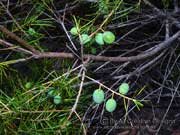
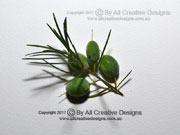

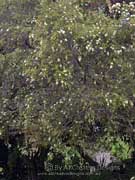
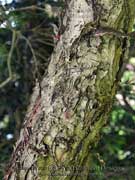

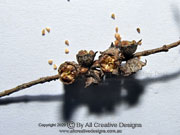
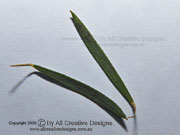
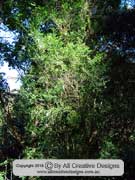
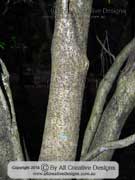
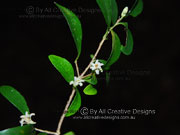

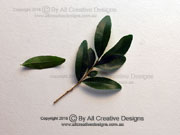
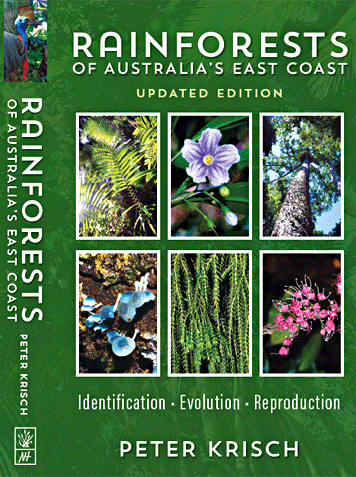
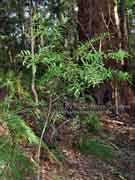
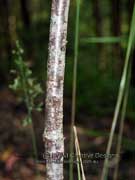
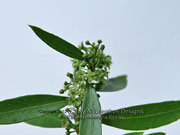
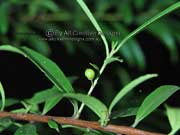
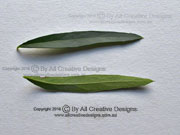
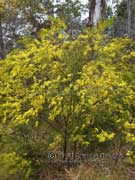
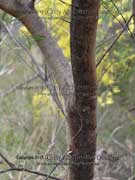
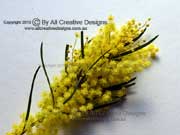



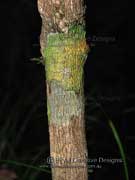
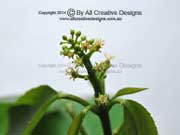
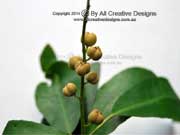

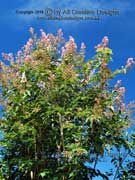
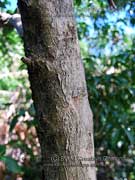
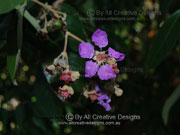

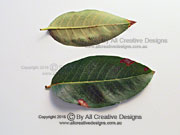

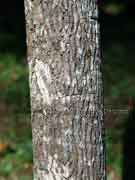


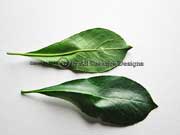
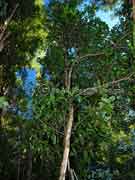

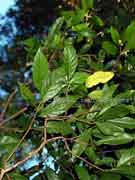
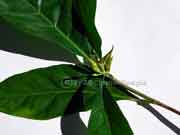
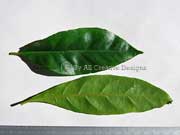
tn.jpg)
tn.jpg)
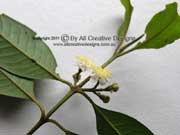
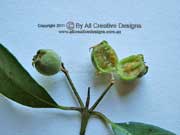
tn.jpg)
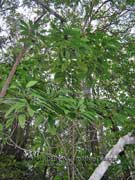
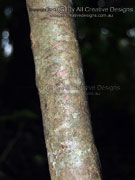
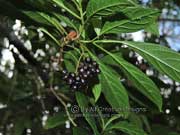
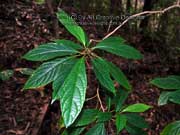

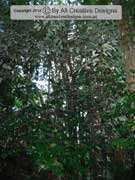
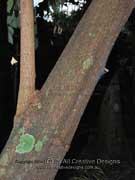
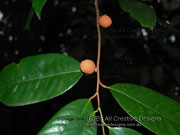
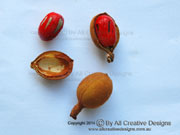
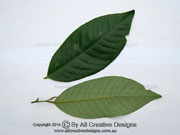

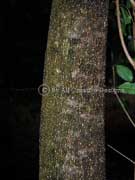
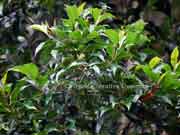
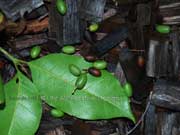
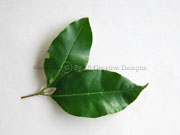
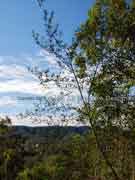
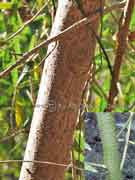
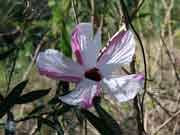
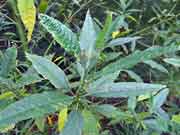
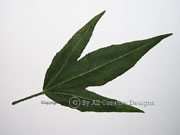
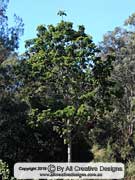
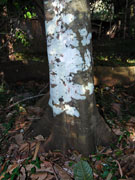
tn.jpg)
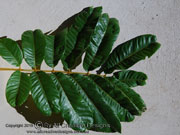



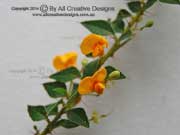

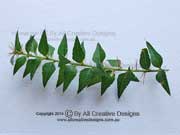
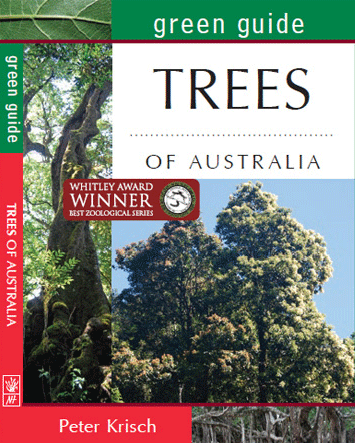
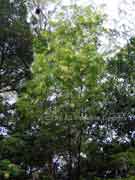
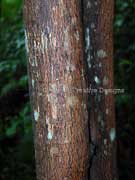

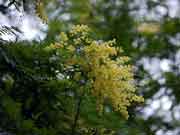


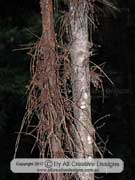
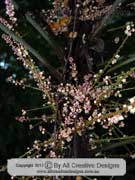
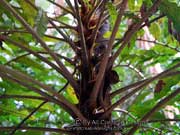

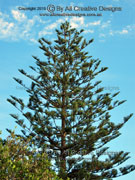
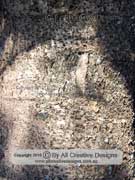
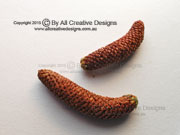
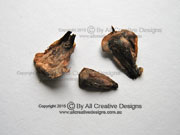
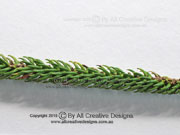

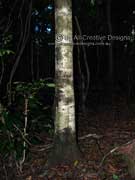
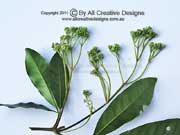
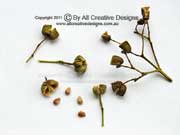
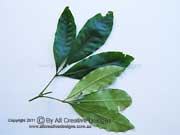
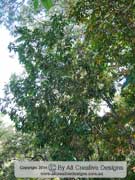
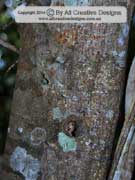
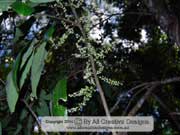
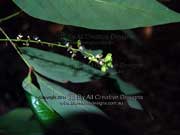
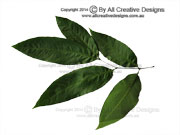
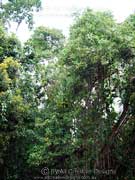
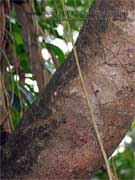


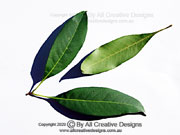
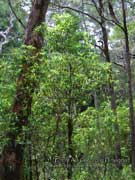
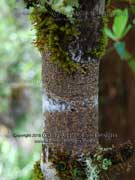
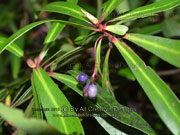

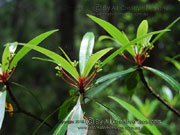
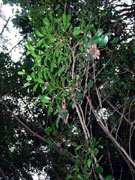
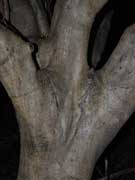
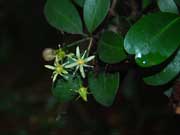
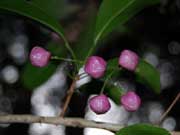
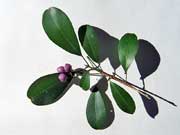


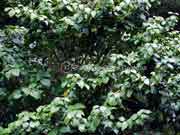

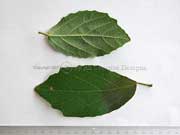
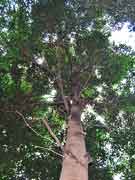
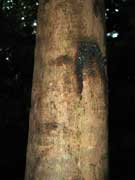
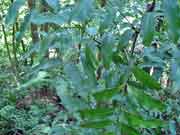
tn.jpg)
tn.jpg)
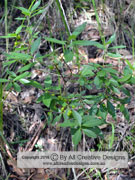

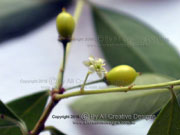
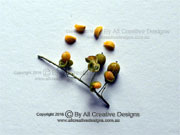

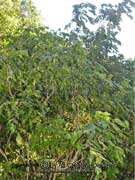
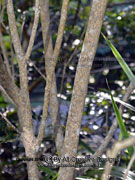
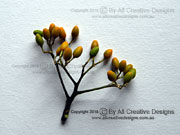
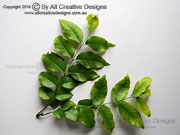
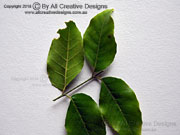

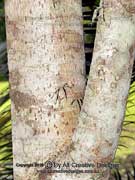
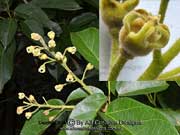


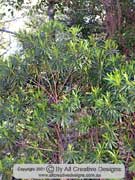
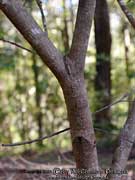


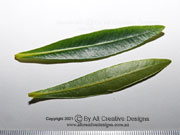



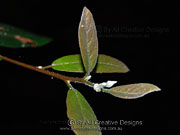
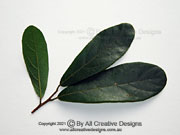
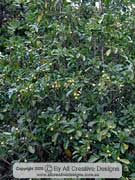
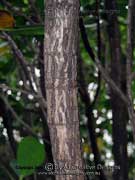
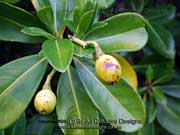



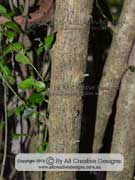
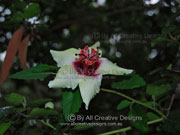


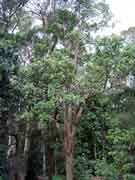
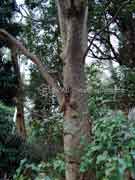
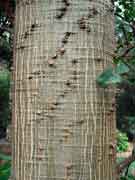
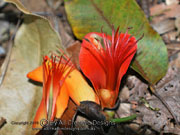

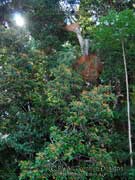
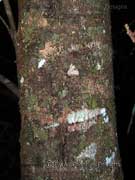
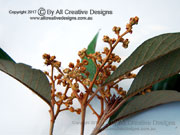
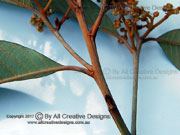

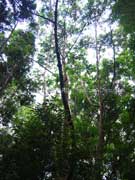

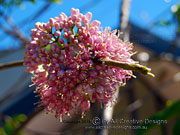
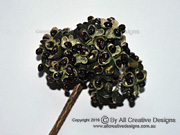
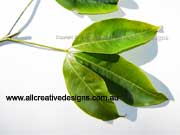

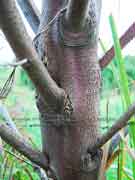

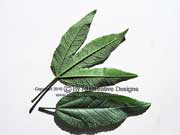
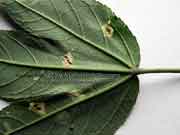



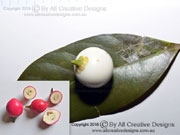


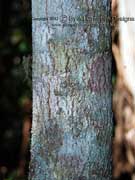


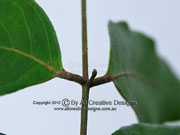
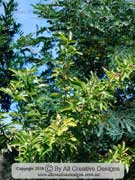




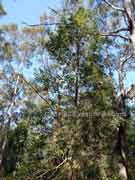


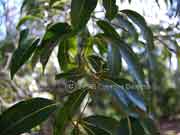
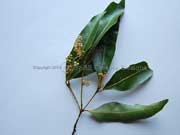
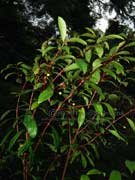

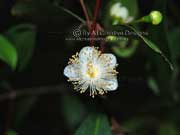
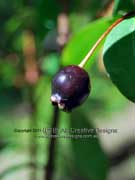
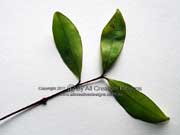

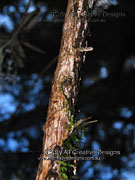
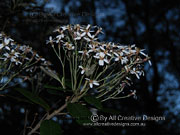

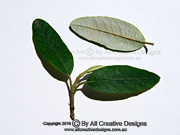


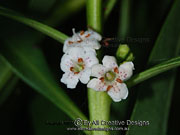

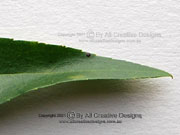

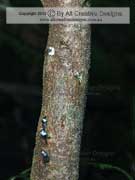
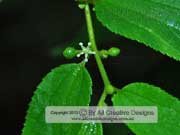

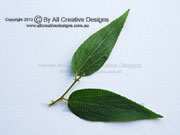
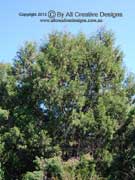


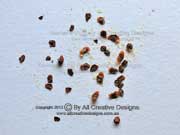


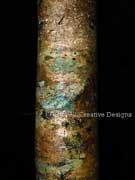
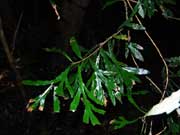
tn.jpg)
tn.jpg)
